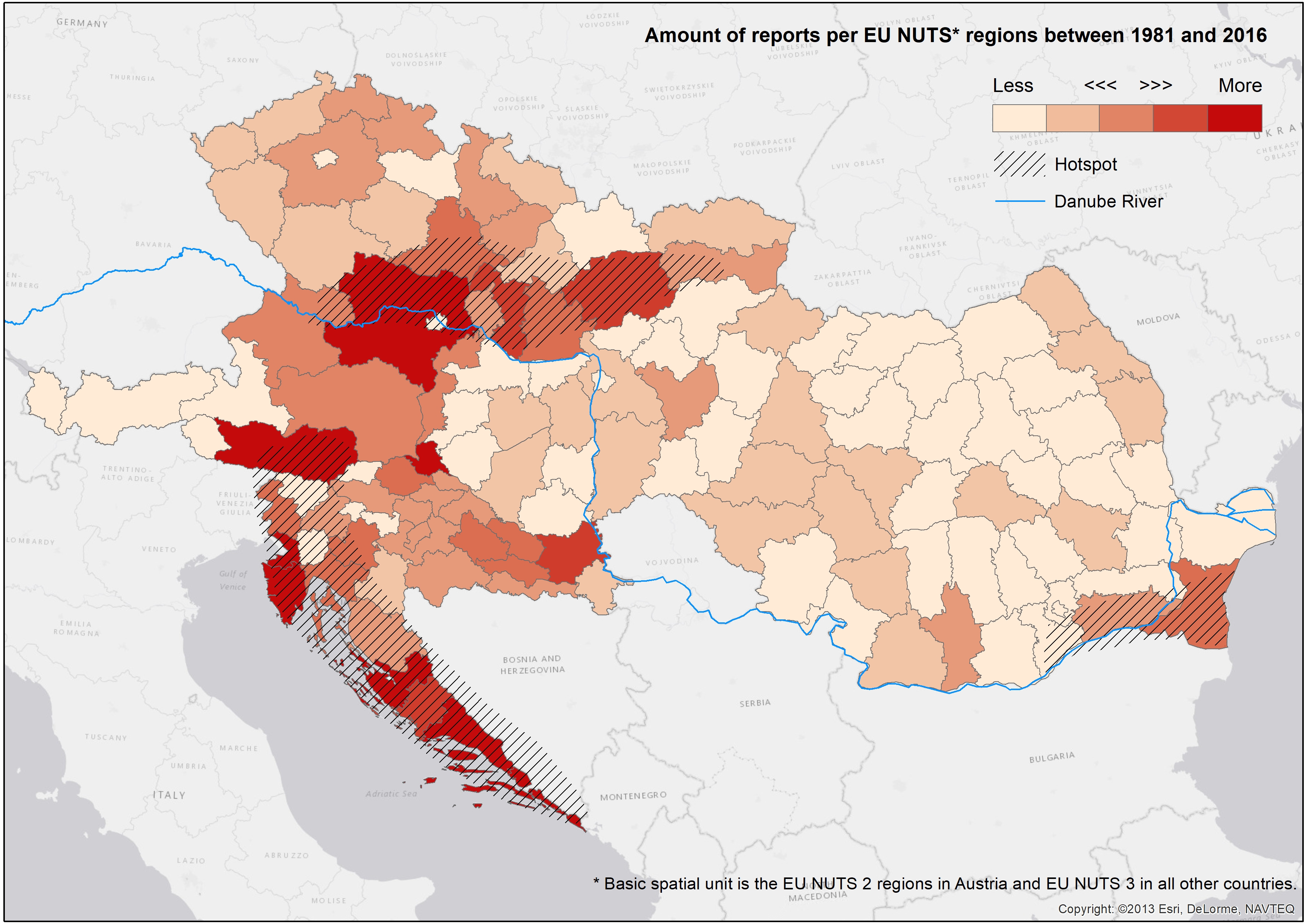DriDanube - Repository of drought event impacts across the Danube catchment
11-06-2019
A brief summary of an article to be published in Acta Mendelianaea Journal (summer 2019 issue)
Since climate change will exasperate the effects of droughts and affect national economies more intensely in many regions of the world, including the Danube region, DriDanube partner, leader of activities on drought impact assessment, CzechGlobe (Global Change Research Institute CAS) has prepared a repository of drought event impacts across the Danube catchment countries between 1981 and 2016. The analysis will help in the future to predict the possible impacts of drought, their spatial localization (up to EU NUTS 3 regions) and also the most affected sectors of the national economies based on the knowledge of the expected future climate development. The main aim was to catalogue and analyse the drought impacts in Central and South Eastern European states located in the Danube river basin (within all 10 DriDanube countries + Bulgaria). Read more about the reasons why drought impact assessment matters and why we are collecting the drought impacts “from the ground” through our national reporting networks.
The identification of dry episodes was based on information from publicly available sources, namely, newspaper and journal articles that reported drought impacts. Information on drought impact occurrences was classified into one of five defined categories in which the drought impact report was most clearly manifested (i.e., agriculture, forestry, soil systems, wildfires and hydrology). In terms of the spatial distribution of drought impacts, individual recorded events were analysed at the level of EU NUTS regions (or their equivalent in non-EU countries).The analysis highlights country-specific vulnerability to drought. Based on the newspaper review made three areas have been identified in the Danube river basin, from which a greater number of press releases refer to drought impacts and can therefore be expected to be more areas affected by drought. Probably the most extensive area is the region around the middle part of the Danube River (with its core in the Pannonian lowland between Vienna and Budapest) and its tributaries from the Czech Republic and Slovakia. On average, the area is characterized by only a slight increase in the number of identified drought impacts between 1981 and 2016, with the impact in particular in the agricultural and water sectors being more dominant. The second identified area is the Adriatic coast region in Croatia and Slovenia. The sectoral distribution of impacts is almost similar to the previous one, but in terms of temporal development, there has been a significant increase in the number of drought impacts in the reporting period (it is not entirely clear how the data would be affected by the war in Croatia in the 1990s, however, probably it does not have a significant impact to the resulting trend over the entire period. The third area with an above-average number of drought impact records is the region on the border between Romania and Bulgaria, especially near the Black Sea coast. Agricultural impacts prevailed here, but some impacts in forestry had also a relatively large share. From the point of view of temporal development of the number of drought impacts, stagnation or a very slight increase was observed throughout the period between 1981 and 2016.

Overall, we can summarize that gradual increases in drought events and the number of reported impacts were identified. This was particularly evident in the agricultural and water management sector. However, it is necessary to add that such a significant increase in these sectors can be influenced to some extent by the increased social relevance which is specific for agriculture and water management. By contrast, the drought impact on the soil system sector (without the direct relationship to agriculture mentioned) has long been perceived as a rather marginal problem by the public, and articles with this issue have been produced much less frequently.
